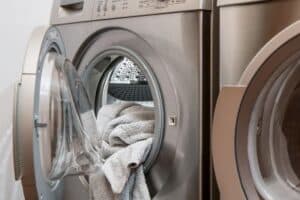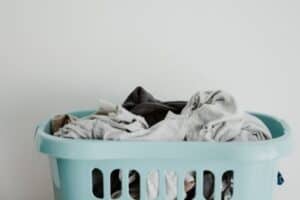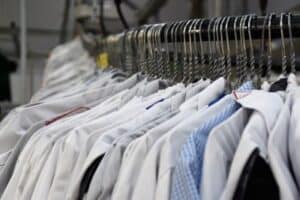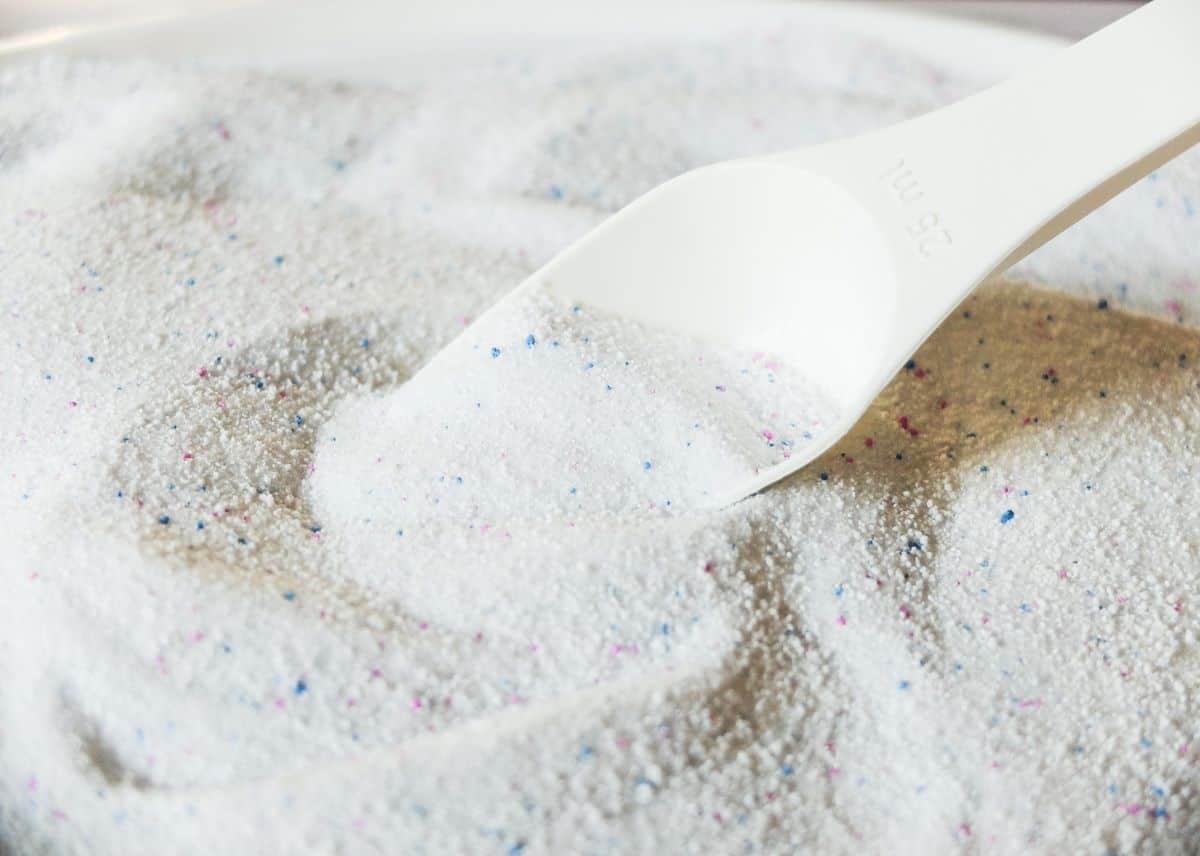Making DIY Laundry Detergent at Home
It is possible to make your laundry detergent at home without having to break the bank. There are many recipes on how to make laundry detergent, but not all of them are safe for the environment or your machine.
Laundry detergent is a product that cleans clothes, and it can be bought in supermarkets. Many people have been recently buying homemade laundry detergent because it is easy to make, safe for your skin, and environment-friendly. Homemade laundry detergent is different from the ordinary one available on the market. It has more benefits. In this article, I will explain why it is better to make your laundry detergent at home.
This article contains instructions for making an environmentally safe recipe that will be free from dyes and perfumes. You can adjust the measurements to meet the size of your washer.

Laundry Detergent Ingredients
The following ingredients are needed to make this recipe:
- 4lbs 7oz Washing Soda (not baking soda)
- 2lbs Borax **Do not use scented borax, look for an unscented version or you can buy it online*
- 2 cups Epsom Salt
- 2 cups OxyClean (or an oxygen-based bleach alternative)
- 2 cups 20 Mule Team Borax (found in the detergent aisle of most grocery stores)
- 4 cups Baking Soda (beware baking soda is not called for, but it does help with odor-fighting and softening your clothes – I added some because my kids have a habit of spilling things)
*This recipe is for a HOT water washer so you may need to adjust the measurements depending on your washing machine. I have a front loading HE washer, if you have an older top loader this recipe might not work as well – but you can always play with the measurements and see what works best for your machine.
Steps To Make Homemade Laundry Detergent
- Mix the washing soda, borax & Epsom salt in a 5-gallon bucket (mine was marked with measurements).
- Next mix the OxyClean and baking soda together, this helps to lessen the grittiness of the washing soda. I tried using powder OxyClean but it did not mix well at all.. trust me, just use liquid!
- Add both mixes to your 5-gallon bucket and stir everything together until fully blended. (**You can add a few drops of essential oil to the mix if desired, I chose not to so I didn’t need to worry about it affecting my cloth diapers. You can also add a few drops of food coloring if you want your detergent to have color – this is completely optional and will not affect its cleaning abilities.)
- Store in airtight containers or ziplock baggies
- Use 1-2 tablespoons per load depending on the size of your washer. I use a smaller scoop for my front loading HE washer and a slightly larger one for my top loader. This recipe has been running great through both washer types.
Reasons To Make Laundry Detergent At Home
There are several reasons to make DIY laundry detergent at home:
1. Environment-Friendly
Homemade laundry detergent is environment-friendly. It is made of natural ingredients such as baking soda, washing soda, and bar soap.
Baking soda is known to be effective in removing bad odor from clothes. Washing soda is used for making homemade laundry detergent because it helps remove stains on clothes effectively.
And a bar of soap contributes to the cleaning ability of homemade laundry detergent. In addition, because there are no other ingredients in homemade laundry detergent, it does not contain any chemical substance harmful to the environment.
As a result, you can reduce the negative impact on our earth when using homemade laundry detergent. You can feel at ease being safe from the environment and your skin.
2. No Need for Fabric Softener
You don’t need fabric softener when you make homemade laundry detergent. A lot of fabric softeners are available on the market, they soften fabrics by coating clothes with a chemical substance that forms a barrier to prevent water from penetrating fibers. This is how it works.
They are not good for your skin because they contain many harmful chemicals. In addition, fabric softeners are not environment-friendly because they contain a large amount of phosphorous and enzymes that can pollute the environment.
Homemade laundry detergent can soften fabrics with baking soda or washing soda. You don’t use fabric softener to soften clothes at home anymore when you make homemade laundry detergent.

3. Easy to Make
You can make homemade laundry detergent easily at home because it has only three ingredients. You don’t need any special equipment or facility for making laundry detergent.
And it takes not much time, about 10 minutes for small amounts and 20 minutes for large amounts of the recipe I will introduce later.
4. More Effective
Ingredients in homemade laundry detergent are better for your clothes and skin. And it can clean clothes effectively without damaging their fabric.
5. It Saves Money
In a time when many of us are struggling with our budgets, you can save up to 80-90% in comparison with commercial detergents. Additionally, you can use ingredients that are on hand, eliminating the need to make purchases.
6. It Saves Time
Making detergent at home allows you to skip one of your errands each month.
7. You Eliminate Unnecessary Packaging
Commercial laundry detergents come in heavy plastic containers that are often not recycled by the stores where you purchase them. Not to mention that you will need to find a place for them in your bathroom or kitchen.
It is hundreds of times better if you just buy a few ingredients and mix them yourself.
8. You Avoid Harmful Chemicals
When you use commercial detergents, many harmful chemicals are absorbed into the skin through the process of washing clothes. This is especially true if you have children or pets and regularly wash any clothes they may be wearing or blankets and pillows where they sleep.
These chemicals pose a significant threat to the health of your whole family, but you can avoid this by making your detergent at home. In addition to saving money by making homemade laundry detergent, you will also be keeping chemicals out of our waterways, oceans, and landfill.
According to the EPA, over 25% of all commercial detergents contain hazardous substances that have been linked to cancer, respiratory problems, developmental disorders, and organ system damage. You also won’t have to worry about adding perfumes as this recipe is scent-free!
The essential oils help keep your clothes smelling fresh and clean. As I mentioned before, homemade laundry detergent is different from the one on the market. It contains no chemical ingredients harmful to the fabric.
For example, sodium carbonate and hydrogen peroxide which are found in ordinary laundry detergent can deteriorate clothes over time. Sodium carbonate damages both cotton and wool fabrics. And hydrogen peroxide is an irritant that causes skin irritation.
Laundry Soap Chemicals
Chemicals in traditional laundry soap:
- Sodium lauryl sulfate: is a chemical that is used as an agent to lower surface tension to make bubbles. It also helps ingredients mix by reducing the surface energy between them. It serves as a good degreasing, foaming, and emulsifying agent, but it has a disadvantage: it can irritate the skin and damage the eyes, which is why it is not recommended for babies to use it.
- Alkylbenzenesulfonate: This ingredient is used in shampoos and toothpaste so you can smell their fragrance and feel their foamy texture. They cost extra money, but they do not work as well as other ingredients and they can irritate the skin.
- Sodium tallowate: is a sodium salt of tallow fatty acids (a type of animal fat). It gives everything it touches a soapy feel and has been proven to be extremely dangerous for aquatic organisms.
- Benzoxonium chloride: This chemical is toxic to fish, but also works as a preservative to other harmful substances. In commercial laundry detergents, benzoxonium chloride is used in the form of a complex with ethylene oxide. It can be toxic when it comes into contact with skin and children are particularly susceptible to it. Although the manufacturer claims that there is no need for concern, it has been banned from use in Europe and Japan due to the harmful effects it may bring about.
- : This ingredient also has several dangerous side effects, such as strong skin irritation and corrosion. It is added to detergents to dissolve minerals and proteins that are present in dirty water, but it poses a threat to children’s skin, eyes, and respiratory systems.
- Sodium carbonate peroxide: This is a bleaching agent that releases small bubbles of oxygen at the temperature of the washing machine, which means it does not need to be put into the detergent itself. The oxygen bubbles are very unstable, making them extremely dangerous during any chemical reaction. They can explode with extreme force when they come in contact with heat or ultraviolet light.
- Tetrasodium iminodisuccinate: Most detergents contain nitrilotriacetic acid, which is considered to be highly toxic for the environment and can cause harm to anyone who comes into physical contact with it. This ingredient is used as a replacement because the manufacturers claim that it is safer for the environment. However, nitrilotriacetic acid decomposes in water and forms carcinogenic substances of amides, which makes it a health hazard for anyone who comes into contact with it – which includes any person who uses a washing machine.

9. Commercial Laundry Products Don’t Provide Adequate Cleaning
Hence, making homemade laundry detergent at home is worthwhile because it has more benefits than ordinary laundry detergents you can buy on the market. So, do you think you’ll give it a try?
It is easy and saves money! It only cost me $36 to make 22 gallons of laundry detergent…that’s just 75¢ per 2-gallon bag. If I’d have bought this much in the store it would have cost at least $220! What will you do with all the money you’ll save?

